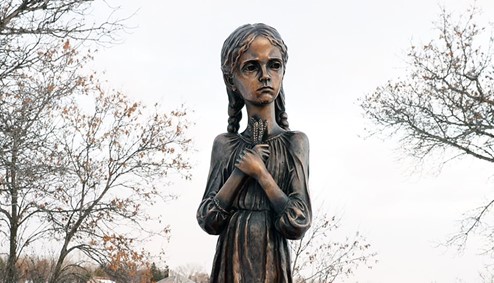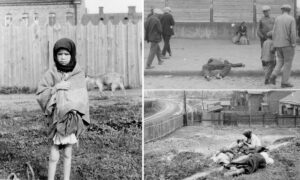
“Those who cannot remember the past are condemned to repeat it,” (Spanish philosopher George Santayana).
From 1932 to 1933, Joseph Stalin, the dictator of the Soviet Union, starved millions of Ukrainians to death. This mass genocide is known today as the Holodomor, or the Great Famine. The 1930s and 1940s is an era often considered one of the darkest in history. The genocide of persons from Jewish descent, globally known as the Holocaust, has been one of the most notorious events to ever be documented. From countless films, documentaries, books, and other works, the Holocaust has been memorialized, yet Stalin’s secret genocide is seldom taught or discussed. “Why is it, to this day, that most people have not heard of the Holodomor?” says history professor Frank Sysyn in the short documentary, Holodomor: Stalin’s Secret Genocide. “The Holodomor was one of the largest genocides of the 20th century.” 28 000 deaths per day became the average within the first month of the famine. Within a year, the Holodomor is estimated to have claimed the lives of up to 10 million people. At the time, Ukraine was home to many Polish and German people who also fell victim.

Retrieved from book RED FAMINE by Anne Applebaum
For a better understanding of how this came to be, it is important to know that the events of the Holodomor took place at a time when there was already a mass starvation problem in the Soviet Union. Joseph Stalin wanted a nation that served its working class. When the Soviet Union was created in the 1920s, there wasn’t much of a working class to begin with. According to historian Timothy Snyder, Stalin wanted to know how to create that working class. “Hunger is part of politics,” says Snyder. “Giving food and taking it away is a normal, as he (Stalin) sees it, part of politics.”
The emergence of the Gulag happened in the late 1920s when Stalin came into power. The Gulag was a system of Soviet labour and detention camps. From the 1920s to the 1950s, it held political prisoners and enemies. The Gulag imprisoned millions of people as it was used as a major tool of political repression. The first large group of people sent to the Gulag were peasants, estimating to have been about 300 000 individuals.
Why peasants were sent to the Gulag is a result of collectivization. The term ‘collectivization’ means the act of organizing people according to an economic system in which the control is shared; in other words, treating farmers like factory workers rather than independent businesses. The famine was a result of this. To put it simply, collectivization was enforced on the Soviet Union’s agriculture sector. The purpose of this was to transform traditional agriculture to reduce the economic power of peasants. Under this rule, peasants were forced to give up their individual farms and join larger, collective farms. Those who refused were usually sent to the Gulag and had their land, along with cattle and grain, taken. The shock of this transition, deportations to the Gulag, slaughtered cattle, and a bad harvesting climate, sparked a major lack of productivity within the farms causing the already-existing famine to increase exponentially.
“This isn’t just mass killing,” says Snyder. “It’s also mass observation and mass participation.” This essentially means that although the Holodomor is considered a massive secret, it was also a very public crime.
There are many reasons why awareness of the Holodomor is so miniscule. Up until the late 1980s, the famine was denied and unacknowledged. Citizens of the USSR were forced into silence while journalists who spoke on the issue were attacked with certain measures. For example, The Soviet government would threaten to cancel a journalist’s visa if they felt the writing wasn’t in the USSR’s best interests. If the reporter’s writing was praising the USSR, they would receive luxuries and privilege.
Archival evidence shows that countries such as Canada and the U.S. were informed about the Famine but chose to avoid any interference.
Sidney and Beatrice Webb, publicly known Stalin apologists, wrote a book praising the USSR, calling the ‘peasants’ lazy and at fault.
These are just a few of the efforts made against the recognition of the Holodomor.

Be the first to comment